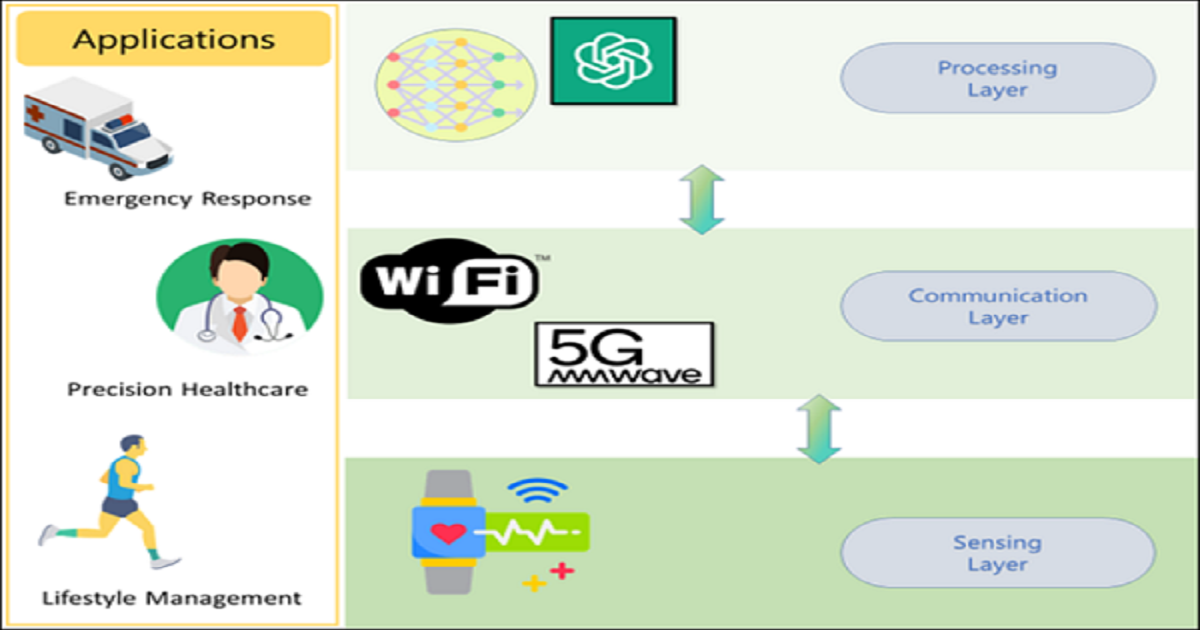Ubiquitous Healthcare Monitoring over Wireless Networks
A special issue of Sensors (ISSN 1424-8220). This special issue belongs to the section "Internet of Things".
Deadline for manuscript submissions: 1 October 2025 | Viewed by 1912

Special Issue Editor
Special Issue Information
Dear Colleagues,
The success of smart watches and health trackers has attracted a growing research interest in continuous health monitoring systems. These systems follow a three-tier architecture containing a sensing system, communication network and a data processing framework. The fifth-generation cellular network and the Wi-Fi 7 networks are capable of ultra-low latency communication, which is critical for the timely delivery of sensed data and their real-time processing. Quality-of-service compliance is necessary to ensure that critical monitoring data are delivered within strict delay (< 1 millisecond) and reliability (BER< 10^(−6)) bounds. Moreover, real-time processing of the collected sensor data can play a critical role in autonomous first aid and alert generation systems by using novel AI-based algorithms. The development of ultra-high reliability and low latency communication (URLLC) with fast and robust AI models along with real-time data processing are critical in realizing such systems.
This Special Issue invites original research articles on the following topics:
- URLLC over Beyond 5G and 6G networks.
- URLLC over IEEE 802.11 WLANs.
- AI models for wireless communication.
- AI for biomedical signal processing.
Dr. Yazdan Ahmad Qadri
Guest Editor
Manuscript Submission Information
Manuscripts should be submitted online at www.mdpi.com by registering and logging in to this website. Once you are registered, click here to go to the submission form. Manuscripts can be submitted until the deadline. All submissions that pass pre-check are peer-reviewed. Accepted papers will be published continuously in the journal (as soon as accepted) and will be listed together on the special issue website. Research articles, review articles as well as short communications are invited. For planned papers, a title and short abstract (about 100 words) can be sent to the Editorial Office for announcement on this website.
Submitted manuscripts should not have been published previously, nor be under consideration for publication elsewhere (except conference proceedings papers). All manuscripts are thoroughly refereed through a single-blind peer-review process. A guide for authors and other relevant information for submission of manuscripts is available on the Instructions for Authors page. Sensors is an international peer-reviewed open access semimonthly journal published by MDPI.
Please visit the Instructions for Authors page before submitting a manuscript. The Article Processing Charge (APC) for publication in this open access journal is 2600 CHF (Swiss Francs). Submitted papers should be well formatted and use good English. Authors may use MDPI's English editing service prior to publication or during author revisions.
Keywords
- internet of things in healthcare
- QoS communication
- Wi-Fi
- URLLC
- artificial intelligence
- digital signal processing
Benefits of Publishing in a Special Issue
- Ease of navigation: Grouping papers by topic helps scholars navigate broad scope journals more efficiently.
- Greater discoverability: Special Issues support the reach and impact of scientific research. Articles in Special Issues are more discoverable and cited more frequently.
- Expansion of research network: Special Issues facilitate connections among authors, fostering scientific collaborations.
- External promotion: Articles in Special Issues are often promoted through the journal's social media, increasing their visibility.
- Reprint: MDPI Books provides the opportunity to republish successful Special Issues in book format, both online and in print.
Further information on MDPI's Special Issue policies can be found here.






